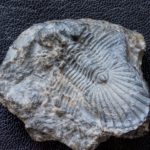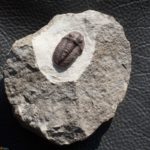Fossils at the Hamar Laghdad in Morocco.
The Hamar Laghdad side is above all famous for its fossils. The Kess-Kess mounds mud located at Hamar Laghdad offer a very interesting and unique geology too.

Fossil Marble & Stonemasonry.
Obviously many fossils can be found in that region between Erfoud and Rissani.
But in fact these are mostly the polished Orthocones and Goniatids. Like Sporadoceras or Manticoceras and maybe also Gyroceratites gracilis.
This goniatid limetions are been quarried in this region literately for decades.
Some of these can be astonishingly beautiful in colour and texture.
It comes in all shapes and sizes and kinds that are conservable. But it is here about fossil and not fossil home decorations. And Palaeozoic fossils from Morocco are mainly Trilobites.
Trilobites and other Fossils from the Hamar Laghdad.
But it is here about real fossils and not fossil home decorations. And if it is about Palaeozoic fossils from Morocco we talk mainly about Trilobites.
But it is here about fossil and not fossil home decorations. And Palaeozoic fossils from Morocco are mainly Trilobites.
And back in the 1980 till the early 2000’s nearly every Morocco Bug was claimed to be from the mysterious Hamar Laghdad site. Or at least from the Hamar Laghdad Formation what remains a mystery itself. It is maybe because numerous publications of Alberti from 1969, 1980, 1982 etc. Back in these days they where the Devonian Trilobites of Morocco very poorly researched. Even Pierre Morzadec did had some unconformities in his 2001 paper.
In fact trilobites from the Hamar Laghdad are rare. And even more rarely they are offered.
One exception are the red trilobites with green eyes. Those where descried by Christian Klug et all in 2009. Some bug bits and pieces where sold back in the 1980’s. These where not prepared and they are also not likely from the Hamar Laghdad. The Jebel Amlane exposure is located close to the piste to Rissani. And they would likely be labelled to be from Erfoud or Afoud.
References:
Alberti, G.K.B. 1969. Trilobiten des jüngeren Siluriums sowie des Unter- und Miteldevons. I. Mit Beiträgen zur Silur−Devon−Stratigraphie einiger Gebiete Marokkos und Oberfrankens.Abhandlungen der Senckenbergischen Naturforschenden Gesellschaft 520: 1–692.
Alberti, G.K.B. 1980. Neue Daten zur Grenze Unter−/Mittel−Devon, vornehmlich aufgrund der Tentaculiten und Trilobiten im Tafilalt (SE−Marokko).
Neues Jahrbuch für Geologie und Paläontologie, Monatshefte 1980 (10):581–594.
Alberti, G.K.B. 1982. Der Hamar Laghdad (Tafilalt, SE Marokko), eine bedeutende Fundstelle devonischer Trilobiten.Natur & Museum 112: 172–182
Klug, C., Schulz, H., and De Baets, K. 2009. Red Devonian trilobites with green eyes from Morocco and the silicification of the trilobite exoskeleton.
Acta Palaeontologica Polonica 54 (1): 117–123.
Morzadec, P. 2001 Les Trilobites Asteropyginae du Dévonien de l’Anti Atlas (Maroc) Palaeontographica. Abteilung A (in French). 244 (1–3): 53–85.
















